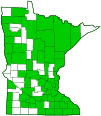chicory
(Cichorium intybus)
Conservation • Wetland • Description • Habitat • Ecology • Use • Distribution • Taxonomy
Description |
||
Chicory is a 12″ to 72″ tall, erect, perennial forb that rises usually on a single stem from a long taproot. When broken or torn the stems and leaves exude a milky latex. The stems are erect or ascending, green to reddish-brown, ridged longitudinally, and usually branched. They are usually hairless above, often moderately to densely covered near the base with white, curled hairs. Basal leaves are inversely lance-shaped, 2″ to 13″ long or longer, and ⅜″ to 3″ wide or wider. They are irregularly cut with triangular lobes (pinnatifid) and rounded sinuses. They resemble leaves of dandelion (Taraxacum). They have a prominent midvein and numerous lateral veins that join in a network before reaching the margin. The upper surface is minutely hairy. The lower surface is minutely hairy and has longer, conspicuous hairs on the midrib. The margins are irregularly toothed. Stem leaves are alternate, stalkless, and clasping, otherwise similar to basal leaves. They become much smaller, less divided, and less toothed as they ascend the stem. The inflorescence at the end of the stem may be an unbranched, elongated, spike-like cluster (raceme) or a branched cluster with ascending, spike-like branches. Additional dense clusters or 1 to 3 flowers rise from the upper leaf axils. The flower heads are mostly stalkless or on very short stalks, occasionally on stalks ½″ to 3¼″ long. The whorl of bracts at the base of the flower head (involucre) is cup-shaped to broadly cylinder-shaped and ⅛″ to 3 ⁄16″in diameter. There are 12 to 30 ray florets and no disk florets. The rays are usually blue or purplish-blue, rarely pink or white. They are 9 ⁄16″ to 1″ long, strap-shaped, and have 5 teeth at the tip. A blue stamen tipped with a blue anther rises from the base of each ray floret. The flowers open in the morning and close later in the day. The fruit is an oblong to egg-shaped, 5-angled achene. |
||
Height |
||
12″ to 72″ |
||
Flower Color |
||
Blue or purplish-blue |
||
Similar Species |
||
Habitat |
||
Pastures, roadsides, railroads, disturbed areas. |
||
Ecology |
||
Flowering |
||
July to October |
||
Pests and Diseases |
||
|
||
Use |
||
|
||
Distribution |
||||
|
Sources |
|||
| 11/20/2022 | ||||
Nativity |
||||
Native to Europe, Asia, northern Africa, and the Indian subcontinent. Introduced and naturalized in North America. |
||||
Occurrence |
||||
|
||||
Taxonomy |
|||
| Kingdom | Plantae (Plants) | ||
| Subkingdom | Pteridobiotina | ||
| Phylum | Tracheophyta (Vascular Plants) | ||
| Class | Magnoliopsida (Dicots) | ||
Order |
Asterales (Sunflowers, Bellflowers, Fanflowers, and Allies) | ||
Family |
Asteraceae (Sunflowers, Daisies, Asters, and Allies) | ||
| Subfamily | Cichorioideae (chicories, dandelions, and allies) | ||
| Tribe | Cichorieae (lettuce, chicory, dandelion, and salsify) | ||
| Subtribe | Cichoriinae | ||
| Genus | Cichorium (chicories and endives) | ||
Subordinate Taxa |
|||
chicory (Cichorium intybus var. foliosum) chicory (Cichorium intybus var.intybus) chicory (Cichorium intybus var. sativum) |
|||
Synonyms |
|||
|
|||
Common Names |
|||
blue sailors blue-sailors chicory coffee chicory coffeeweed common chicory succory |
|||
Glossary
Achene
A dry, one-chambered, single-seeded seed capsule, formed from a single carpel, with the seed attached to the membranous outer layer (wall) only by the seed stalk; the wall, formed entirely from the wall of the superior ovary, does not split open at maturity, but relies on decay or predation to release the contents.
Involucre
A whorl of bracts beneath or surrounding a flower, flower head, or flower cluster.
Panicle
A pyramidal inflorescence with a main stem and branches. Flowers on the lower, longer branches mature earlier than those on the shorter, upper ones.
Pinnatifid
Deeply cut, more than half way to the midrib but not to the midrib, into lobes that are spaced out along the midrib; the lobes do not form separate leaflets.
Raceme
An unbranched, elongated inflorescence with stalked flowers. The flowers mature from the bottom up.
Visitor Photos |
|||||
Share your photo of this plant. |
|||||
| This button not working for you? Simply email us at info@MinnesotaSeasons.com. Attach one or more photos and, if you like, a caption. |
|||||
Alfredo Colon |
|||||
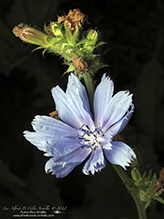 |
|||||
MinnesotaSeasons.com Photos |
|||||
|
|||||
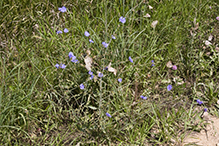 |
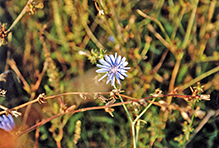 |
||||
Plant |
Plant |
||||
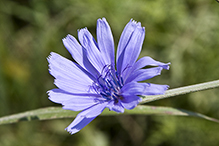 |
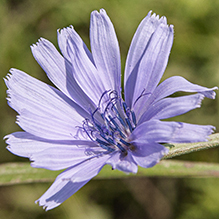 |
||||
Flower head |
|||||
|
|||||
|
|||||
|
Flower head |
||||
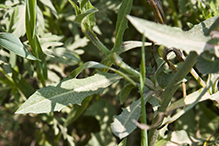 |
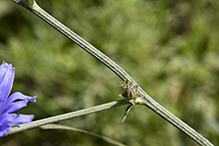 |
||||
Leaves |
Stem |
||||

Slideshows |
||
| Cichorium intybus Susanne Wiik |
||

|
||
About
Sikori, Chicor |
||
| Chicory Andree Reno Sanborn |
||
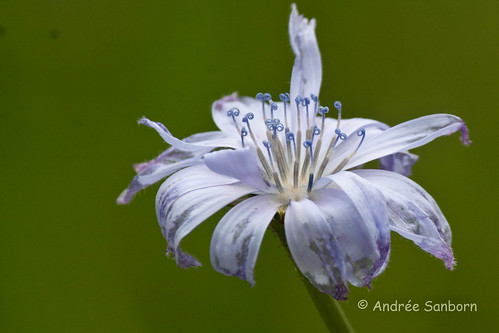
|
||
About
Cichorium intybus |
||
| Cichorium intybus CHICORY Frank Mayfield |
||
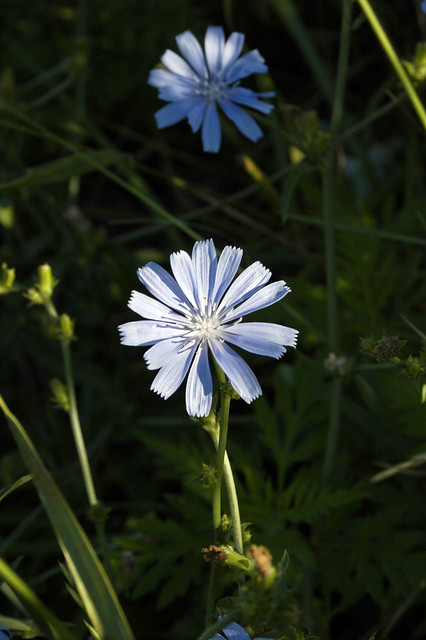
|
||

Visitor Videos |
|||
Share your video of this plant. |
|||
| This button not working for you? Simply email us at info@MinnesotaSeasons.com. Attach a video, a YouTube link, or a cloud storage link. |
|||
Other Videos |
|||
| Chicory (Cichorium intybus) ~ Introduced Species Wandering Sole TV |
|||
About
Published on Sep 13, 2013 Chicory (Cichorium intybus), sometimes referred to as Blue Sailors, are an introduced species to North America (and elsewhere). They are a member of the Sunflower (Asteraceae) family and are native to Eurasia. Their leaves have long been used as a food source and their roots can be used in the making of a coffee substitute. Lacking natural predators and diseases, invasive plant species grow and spread rapidly throughout native ecosystems. Once established, invasive plants are very difficult to control and they choke out native species. This greatly affects wildlife habitat and rangeland. On a global scale, invasive pant and animal species are considered to be the second largest contributor to the loss of biodiversity, next to the loss of habitat. |
|||
| Common Chicory (Cichorium Intybus) - 2012-06-26 W3stlander |
|||
About
Published on Jun 27, 2012 Common Chicory (Cichorium Intybus). --------------- |
|||
| Chickory (Cichorium intybus ) wvoutdoorman |
|||
About
Published on Aug 22, 2012 Chickory (Cichorium intybus ) plant |
|||

Visitor Sightings |
|||||
Report a sighting of this plant. |
|||||
| This button not working for you? Simply email us at info@MinnesotaSeasons.com. Be sure to include a location. |
|||||
| Alfredo Colon 8/3/2022 |
Location: Albany, NY |
 |
|||
MinnesotaSeasons.com Sightings |
|||||

|
Created: 2/23/2005 Last Updated: © MinnesotaSeasons.com. All rights reserved. |
